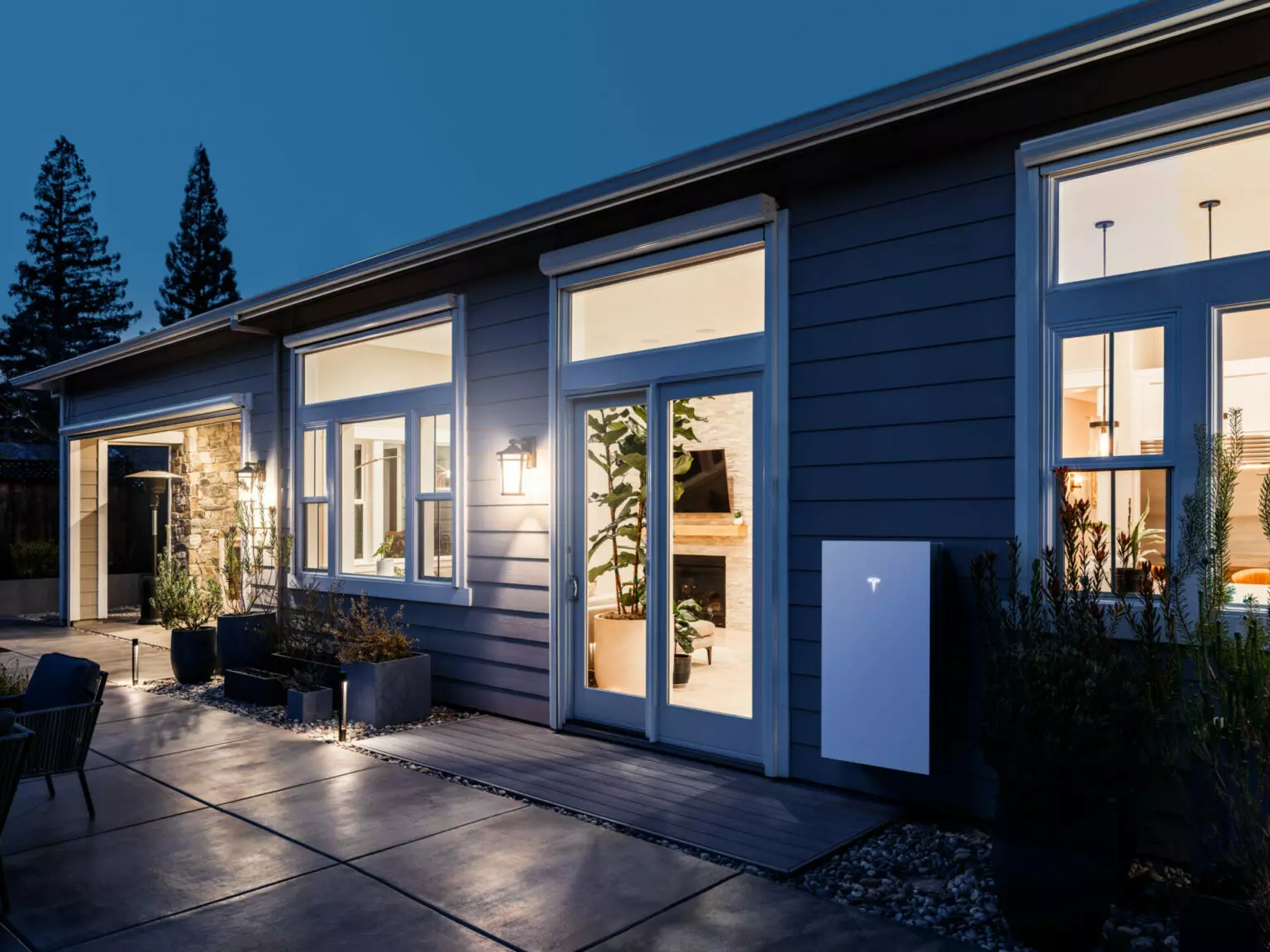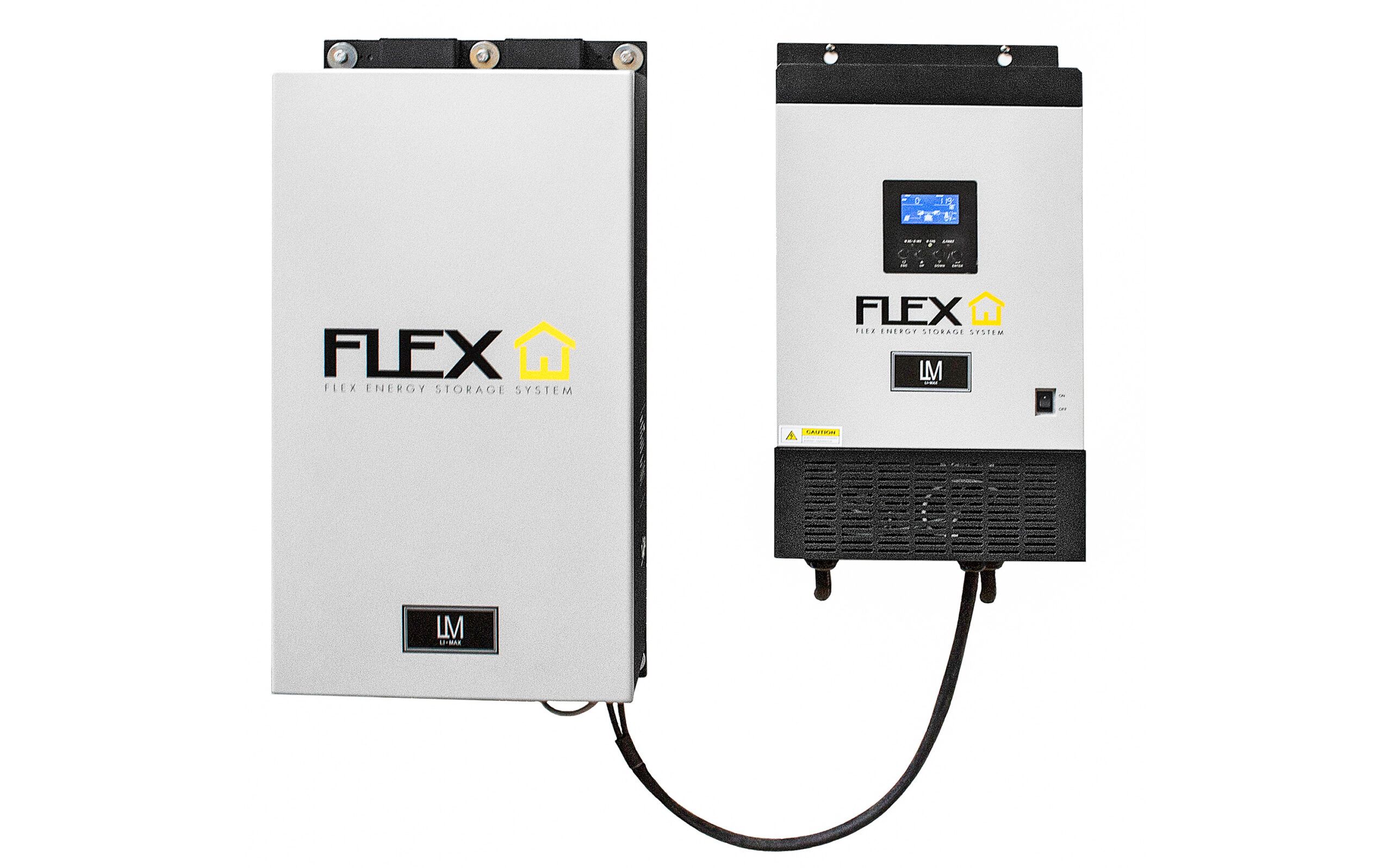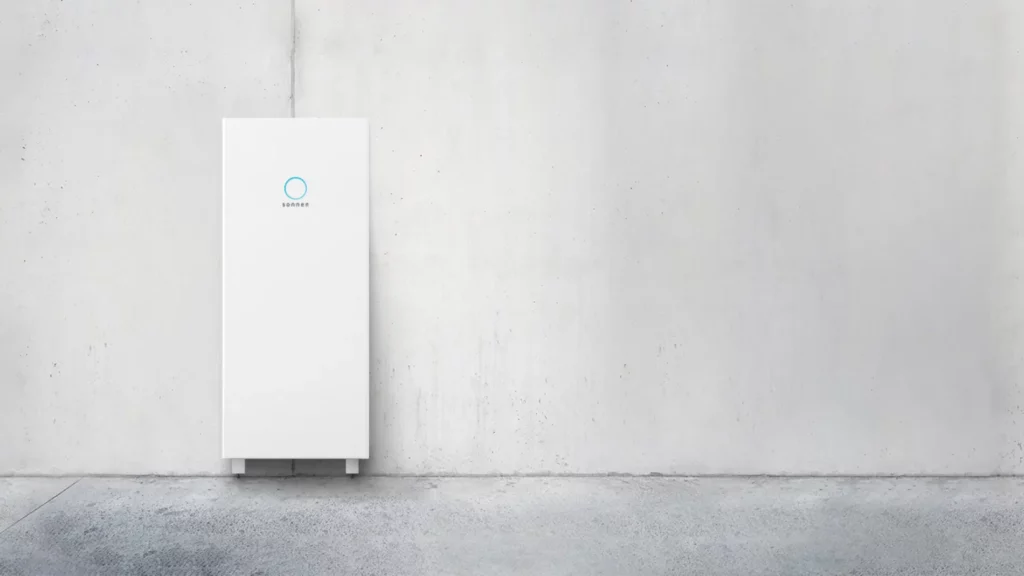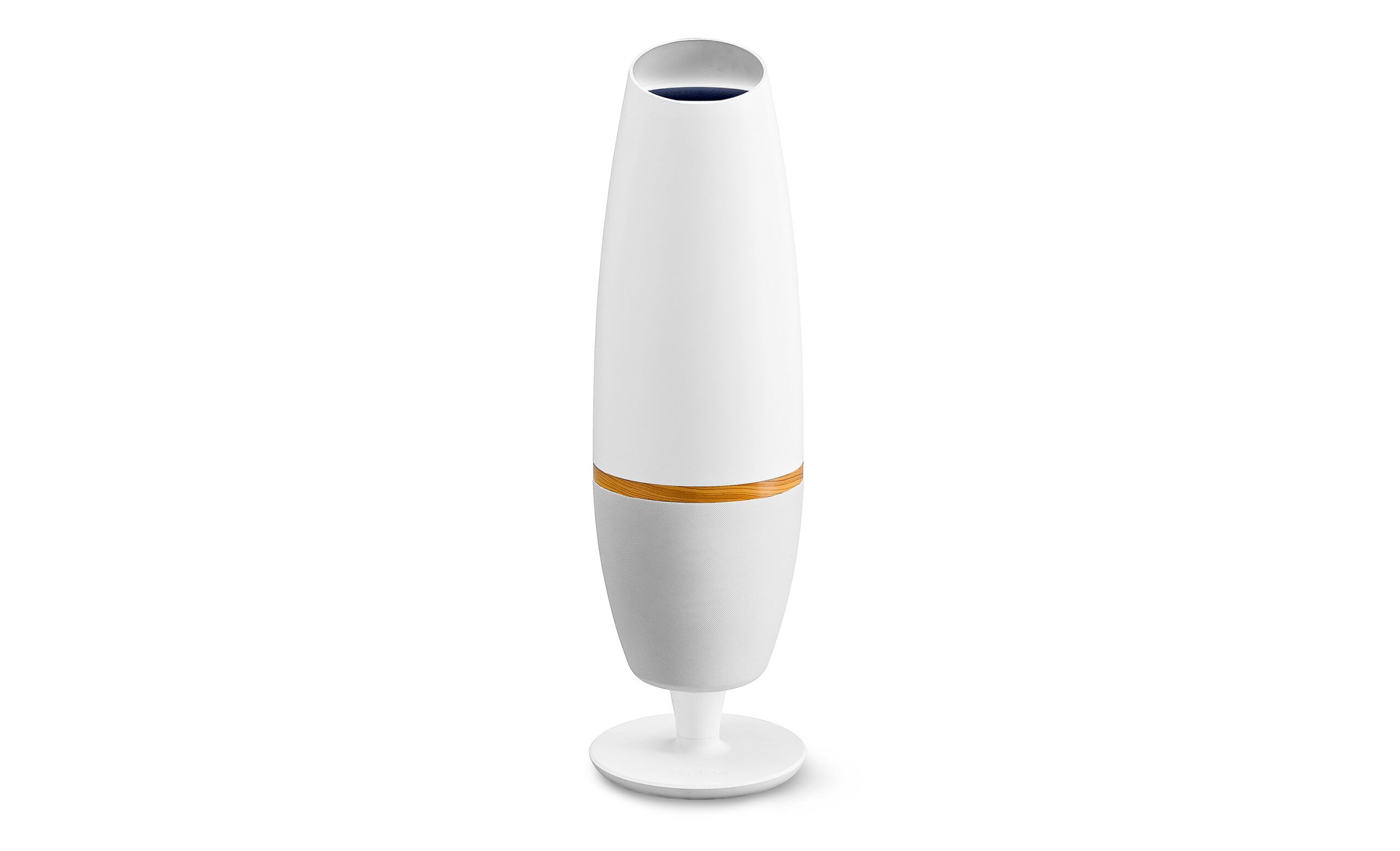Several years ago, Phil Robertston of Woodstock, Vermont signed up for a pilot program to install a Tesla home battery system called the Powerwall. It’s based on the same lithium-ion technology the company uses in its electric cars. These systems have become popular in recent years, providing backup power during blackouts while allowing homeowners to lower energy costs and reduce their reliance on the grid. Since then, the Powerwall has become one of the most popular home batteries available.
“A storm can mess with a power line, knocking out power for hours, but our Internet, furnace, and refrigerator stay on,” Robertson says.
If you’re interested in exploring similar options for your home, our guide will walk you through the types available, their associated costs, and their pros and cons.
Understanding Home Battery Backup Systems
Home battery backup systems are large, rechargeable batteries designed to power your home during electrical outages. They can charge through the electrical grid or, more commonly, through solar panels installed on your property. During a power outage, the battery system automatically kicks in, providing electricity to keep essential appliances and systems running.
Types of Home Battery Backup Systems
There are several types of home battery backup systems available, each with its own advantages and limitations. The three main types are lithium-ion, lead-acid, and flow batteries.
Lithium-Ion Batteries
Lithium-ion batteries are a common type used in home battery backup systems. They’re known for having high energy density and relatively low maintenance requirements and can cycle thousands of times before their capacity significantly degrades. These batteries use the same technology found in electric vehicles and mobile devices.
Lead-Acid Batteries
Lead-acid batteries have been used for decades, including in home energy storage. They’re generally less expensive than lithium-ion batteries and can be cost-effective for homeowners with low power requirements. However, they have a shorter lifespan and require more maintenance.
Flow Batteries
Flow batteries are an emerging technology in the home energy storage market. They use liquid electrolytes stored in separate tanks, which flow through a thin ion-exchange membrane to generate electricity. While flow batteries are still relatively expensive, they offer the potential for longer lifespans. Their unique design further allows for easy capacity expansion, making them an attractive option for homeowners wanting to increase their power storage over time.
You might also see other rarer types of batteries used in home battery backup systems. These batteries can include nickel-cadmium batteries, saltwater batteries, and the many different variations of lithium-ion batteries.
Top Home Battery Backup Systems
The home battery backup market is growing rapidly, with several notable systems available to homeowners. Here are some of the top options available.
Tesla Powerwall

The Tesla Powerwall is one of the most well-known home battery systems. Priced at around $9,300 before professional installation, the Powerwall 3 offers 13.5 kilowatt-hours (kWh) of storage capacity. It’s designed to integrate seamlessly with solar panel systems and can power critical home systems for days during an outage. The sleek design, Tesla’s brand reputation, and an extensive network of installers and support providers have made it a popular choice among homeowners.
Flex Energy Storage System

The Flex Energy Storage System is marketed as a “solar generator” alternative to traditional standby generators. It’s explicitly designed for backup power and doesn’t feed excess solar power back to the grid. The system comes in 5–10 kWh capacities and includes solar panels in the installation package. This system is particularly attractive for homeowners looking to maximize their solar energy usage without significant infrastructure changes.
Sonnen Core+

Sonnen is a premium home battery brand that’s gaining popularity among high-end designers. Rob Meyers of South Mountain Company uses its systems for homes in Martha’s Vineyard, Massachusetts, where power outages are common. “We’re appealing to people who fall in love with the cool new technology,” he says.
While pricing varies, Sonnen systems offer advanced features and integration capabilities. Sonnen’s commitment to sustainability and long battery life make it a compelling choice for environmentally conscious homeowners.
Orison Tower

The Orison Tower represents a unique approach to home battery systems. It’s designed as a 2.2 kWh storage battery fitting inside a freestanding wireless living room speaker and is meant to be a plug-and-play solution, requiring no professional installation. Although its capacity is lower than some other options, its innovative design and ease of use make it an interesting option for homeowners with limited space.
Factors To Consider When Choosing a Home Battery Backup
You’ll need to consider several factors to choose the right system for your specific needs. Here’s what to keep in mind.
Capacity and Power Output
A battery system’s capacity is measured in kilowatt-hours (kWh) and tells you how long it can power your home. Power output, measured in kilowatts (kW), indicates how many devices the battery can run simultaneously. When choosing a system, consider your energy needs and which appliances you want to keep running during an outage. If your primary aim is to maintain basic lighting and keep essential appliances running, a smaller capacity is fine. Conversely, you’ll need a higher-capacity battery to power more of your home.
Installation Requirements
Some battery systems, like the Tesla Powerwall, require professional installation, which can add between $2,000 and $3,500 to your total, according to Angi. Other systems, like the Orison Tower, are designed for simple plug-in installation.
Consider your home’s electrical setup and your comfort with DIY projects. Professional installations often include warranties and service plans, giving you more peace of mind for an extra cost.
Compatibility With Existing Systems
If you already have solar panels or plan to install them, ensure the battery system you choose is compatible to maximize efficiency and avoid integration issues. Some systems are explicitly designed to work with solar setups, while others can operate independently or with grid power.
Cost Analysis of Home Battery Backup Systems
The cost of a home battery backup system depends on its type, capacity, and installation requirements. Here’s a breakdown of the financial considerations.
Initial Investment
According to Angi, home battery systems typically range from $400–$750 per kilowatt hour, not including installation costs. A low-capacity lead-acid battery system could cost around $5,000, while the highest-capacity lithium-iron-phosphate system can reach $30,000. Knowing more about your preferred system, design, and goals can help you budget effectively.
Long-Term Savings
The upfront costs for a battery system can be significant, but they can lead to long-term savings on electricity bills. Storing energy when rates are low to use during peak hours is a great way to save money.
Some utilities, such as Green Mountain Power in Vermont, offer programs that access customers’ batteries to reduce peak demand, potentially leading to lower electricity costs for all customers. “This technology benefits everyone…Even the customers who don’t add batteries benefit from lower electricity costs because we have lower peak demand,” says Kristin Carlson, Vice President of Strategy and External Affairs.
Government Incentives and Rebates
Many local and state governments offer incentives for installing home battery systems, especially when customers pair them with solar panels. Incentives can include tax credits, rebates, or low-interest financing options.
Be sure to research available incentives in your area, as they can significantly reduce the overall cost of the system. Larger-scale programs like the federal solar tax credit can also cover a substantial portion of installation costs. For example, taking advantage of this credit when installing a Tesla Powerwall can drop the price down from $9,300 to $6,510.
Benefits of Home Battery Backup Systems
Home battery backup systems offer several attractive benefits many homeowners can appreciate.
Energy Independence
With a battery backup system, you can achieve a high degree of energy independence. This means less reliance on the grid and protection against rising electricity costs.
Home battery backup systems are often installed in conjunction with solar panel systems. With this setup, you can increase your energy independence by storing excess solar energy generated during the day for use at night or during power outages. If you’re interested in installing solar panels along with a battery backup, check out our guide to the best solar companies.
Protection Against Power Outages
One of the primary benefits of a home battery system is the ability to keep essential systems, like heating, refrigeration, and communications devices, running during power outages. This can improve your comfort and safety in extreme weather events and other power emergencies.
Potential for Lower Electricity Bills
By storing energy when it’s cheap and using it when grid electricity is expensive, you can potentially reduce your overall electricity costs. This is especially true when you use battery backup in conjunction with solar panels, allowing you to store energy you don’t use and sell it back to the grid.
Future Trends in Home Energy Storage
The home energy storage market is expected to grow significantly in the coming years. McKinsey and Company analysts expect the industry to more than double in size by 2030, reaching between $120–$150 billion in market value.
Growth and innovation will hopefully drive down costs and improve accessibility for homeowners. Advancements in battery capacity, lifespan, and integration with smart home systems alongside emerging technologies like solid-state batteries and improvements in energy management systems hold further promise for making these systems more efficient, safe, and reliable.
How To Maintain Your Home Battery Backup System
Proper maintenance is crucial for ensuring your battery backup’s longevity and efficiency. Most modern systems, especially ones using lithium-ion batteries, require minimal maintenance. However, you should still regularly check the system’s performance, keep the area around the battery clean and well-ventilated, keep up with regular firmware updates if necessary, and follow the manufacturer’s guidelines for optimal operation.
Our Conclusion
Home battery backup systems represent a significant advancement in residential energy management. They offer increased energy independence, protection against power outages, and the potential for long-term cost savings. While the upfront costs can be high, declining prices and government incentives make these systems increasingly accessible.
As the technology continues to evolve and the market grows, we expect to see more innovative and efficient home battery solutions. If you’re considering a battery backup system, carefully evaluate your energy needs, budget, and long-term goals to determine if this technology is the right fit for your home.

